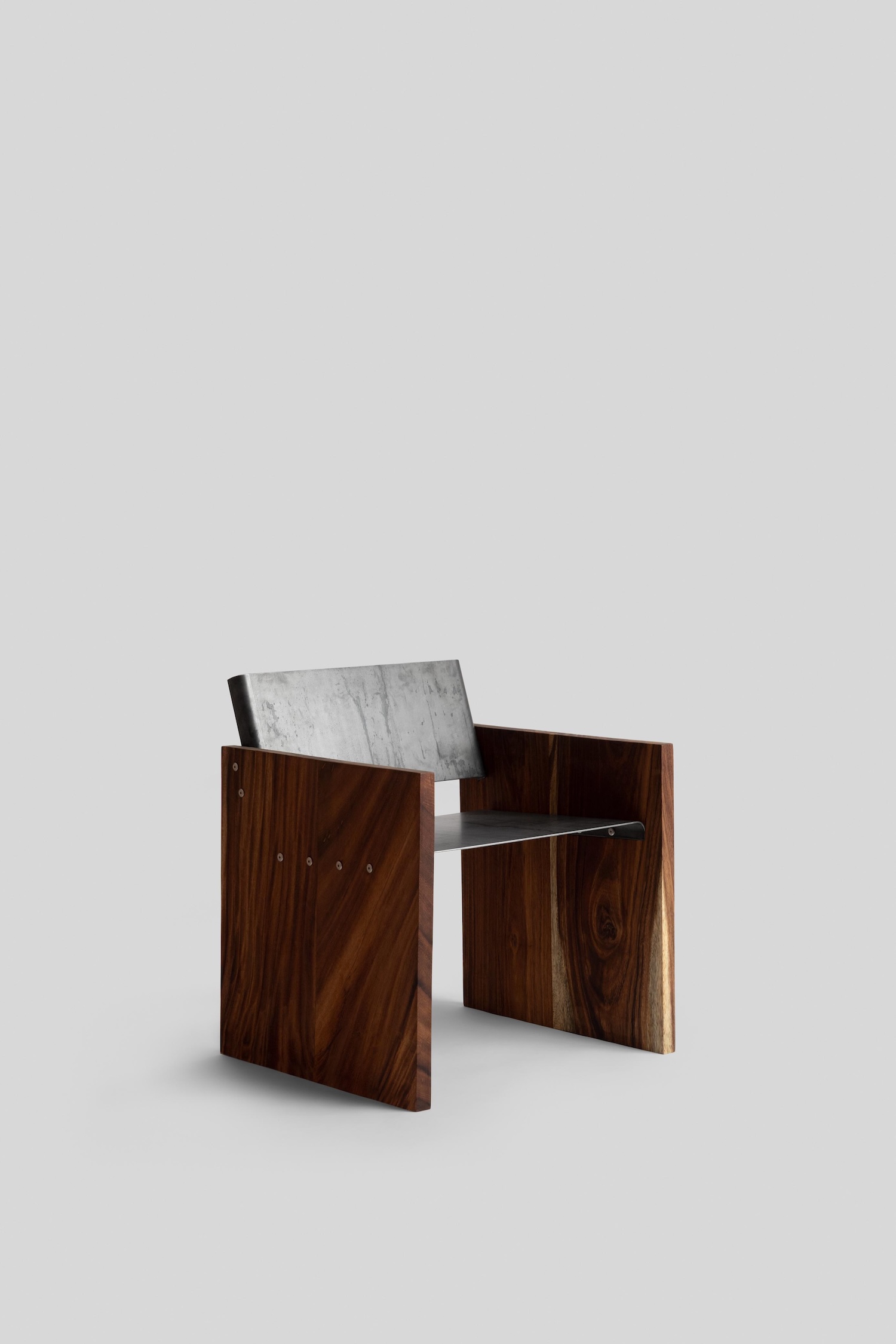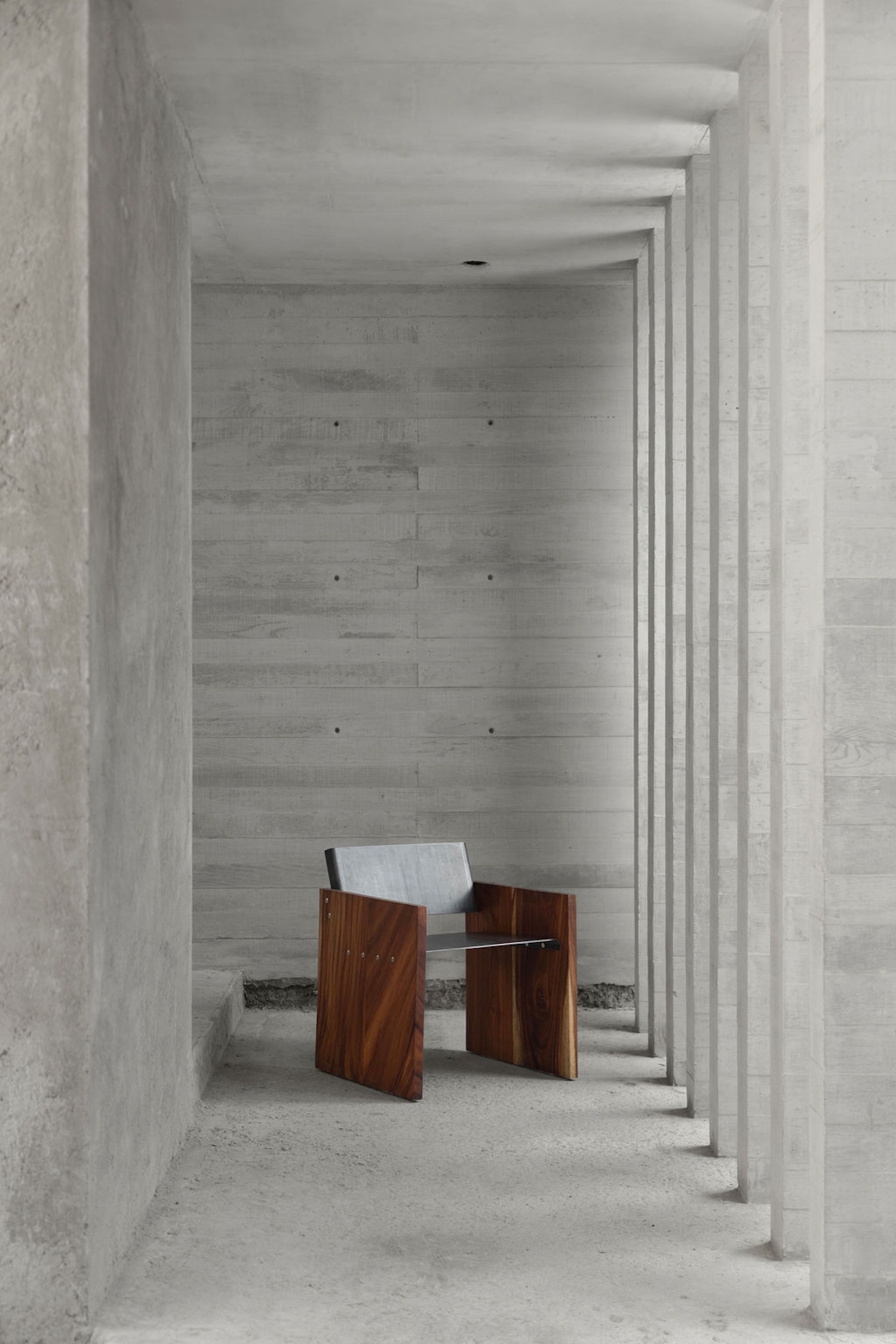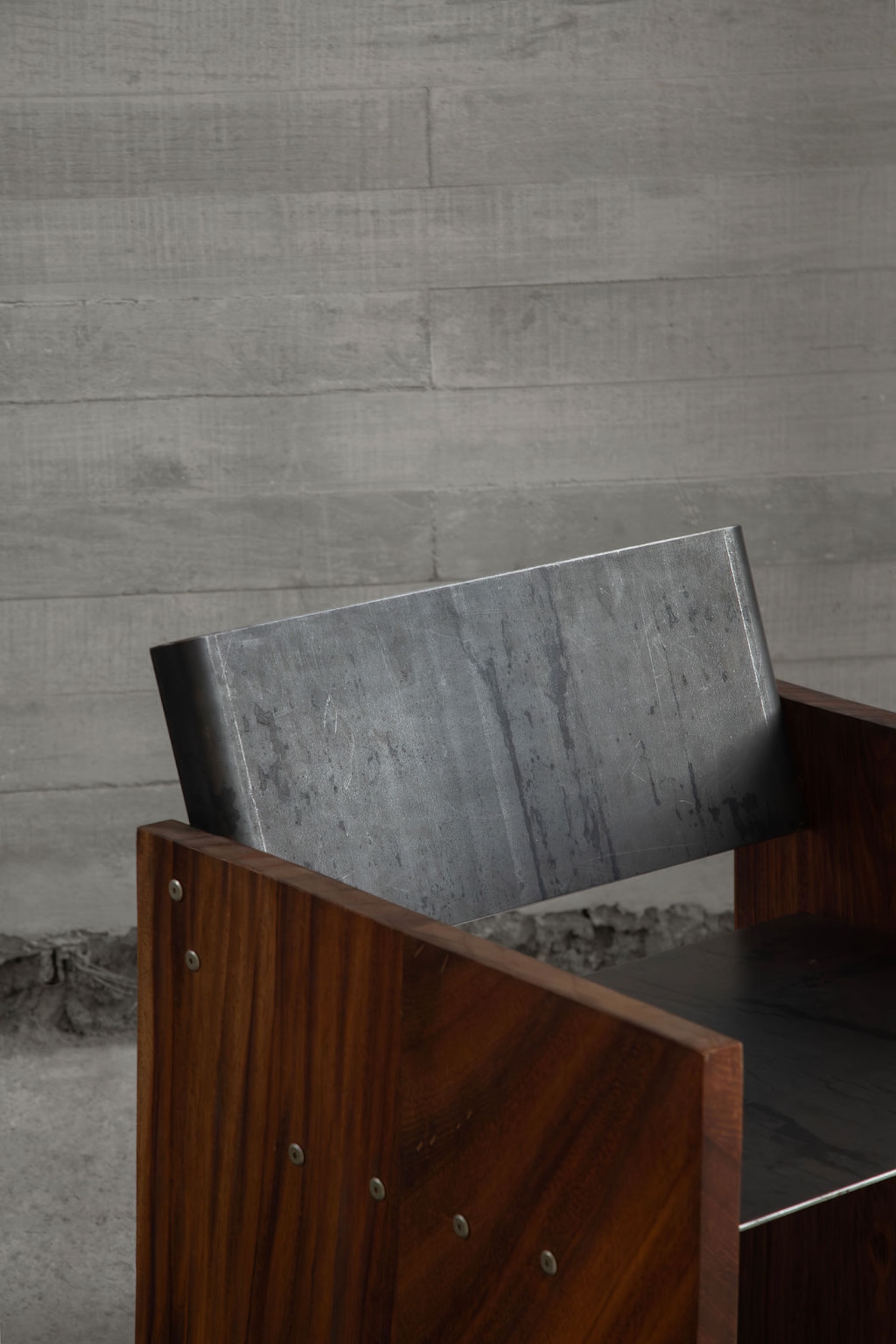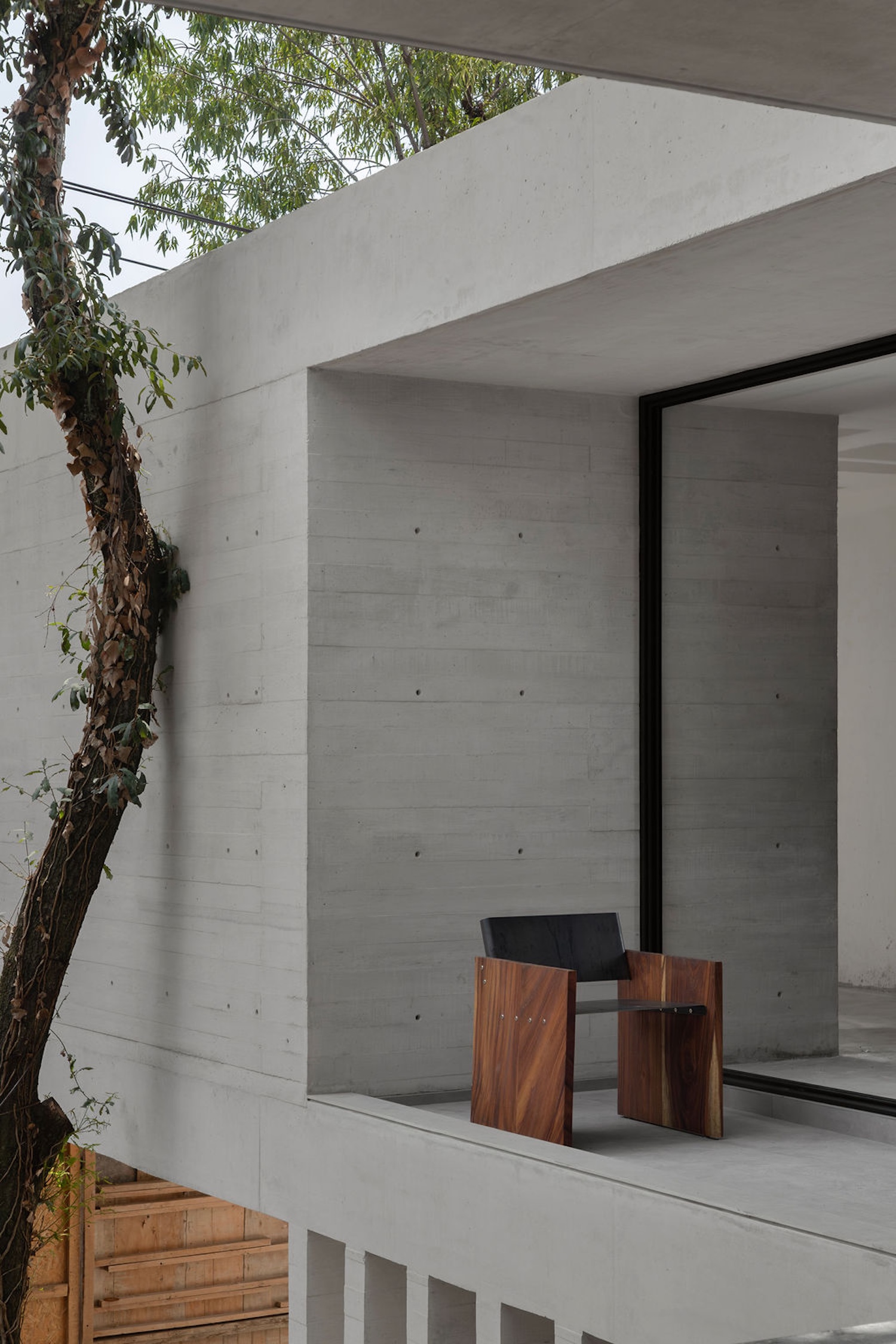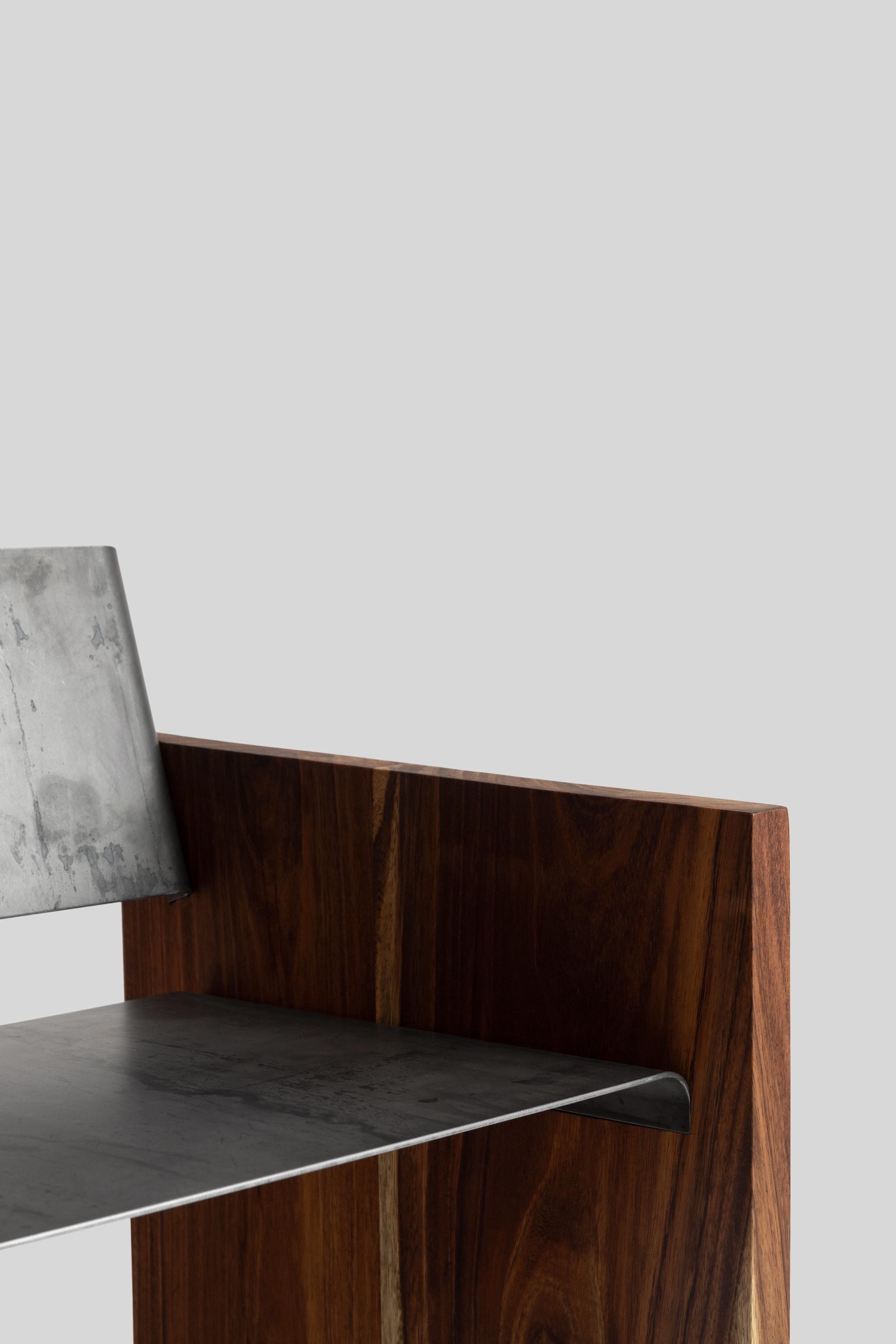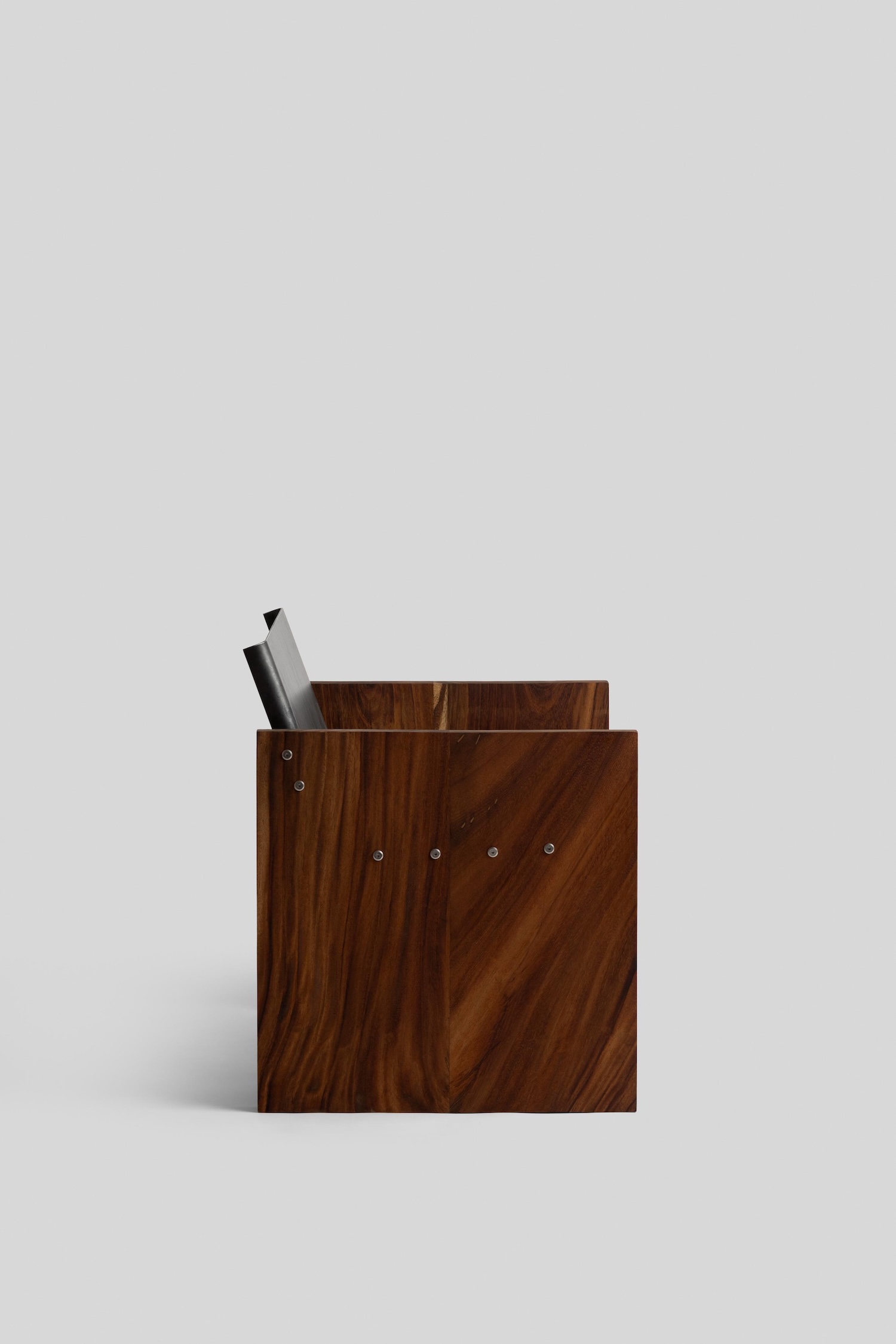Silla Cuatro is a minimalist chair located in Puerto Escondido, Mexico, designed by Omar Wade. This piece emerges from the architect’s immersion in Oaxacan coastal culture, where encounters with local craftsman “Memo” and his parota wood workshop provided both material inspiration and collaborative framework for furniture exploration. The chair demonstrates how architectural thinking can inform furniture design through systematic approaches to proportion, material selection, and construction logic that honors regional making traditions.
Wade’s conceptual approach centers on the perfect square as geometric organizing principle, establishing uniform 60-centimeter dimensions for height, depth, and width that create formal consistency across the chair’s components. This cubic framework reflects architectural sensibilities about modular systems and proportional relationships, translated into furniture scale where human ergonomics must coexist with geometric purity. The square’s boundaries and interior spaces become design parameters that guide both structural and aesthetic decisions.
The two wooden legs, each measuring 60x60x60 centimeters with 4-centimeter thickness, demonstrate sophisticated understanding of parota wood’s structural capabilities and visual weight. This local hardwood, prized throughout coastal Mexico for furniture making, provides necessary strength while contributing regional material identity that connects the chair to its geographic origins. The substantial leg dimensions create visual anchoring that supports the steel seat’s apparent weightlessness.
The 3-millimeter steel plate seat introduces industrial material into predominantly craft-based construction approach, creating dialogue between traditional woodworking and contemporary fabrication techniques. Wade’s decision to work the steel minimally – adding only a single fold to create connection tabs – respects the material’s inherent properties while providing necessary attachment methods. This restraint allows the steel’s natural characteristics to dominate rather than imposing complex forming operations that might obscure material identity.
